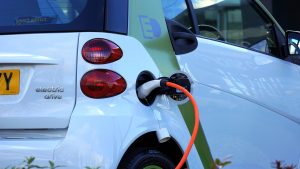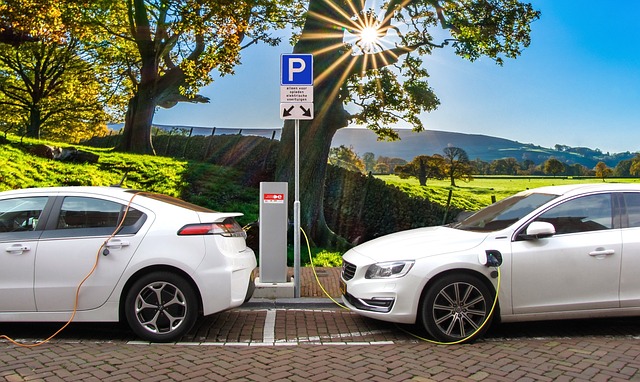The European Union is constantly looking for ways to increase the use of renewable energy in the grid of its member-states. In comparison to other continents, Europe does not possess the amount of non-renewable natural resources that Asia and the Americas do, so it is still heavily reliant on imported fossil fuels.
In order to reach energy independence, while at the same time trying to preserve the environment, the European Union has undertaken measures to ensure that its member-states invest in renewable energy and abandon traditional energy sources like natural gas.
In this article, we will discuss specific measures and laws enacted by the European Parliament in an attempt to boost renewable energy integration, as well as advice as to how to practically achieve it.
EU Laws and Directives Concerning Renewable Energy
The newest EU directive regarding the use of renewable energy, called Renewable Energy Directive, was adopted in September 2023. According to it, renewable energy has to account for 42.5% of all overall consumption across the EU by 2030. The previous target was 32%.
Moreover, the Directive also features measures about greenhouse gases. Member states can choose between two options:
- reducing greenhouse gas intensity in transport by 14.5% via renewables by 2030
- reaching 29% of renewable energy consumption in transport by 2030
Interestingly, the Renewable Energy Directive has a 1% requirement for renewable fuels of non-biological origin (RFNBOs) by 2030.
In addition, the industry is required to increase its use of renewables by 1.6% annually and eventually reach the target of 42% hydrogen use by 2030. On the other hand, member states can discount RFNBOs contribution in the industry if the national energy consumption meets EU targets or if the amount of grey hydrogen consumed is below 23% by the stated deadline of 2030.
Hungary and Poland originally voted against the measure in the Council, but it eventually passed. Member states were consequently given a period of 18 months to adopt the new legislation.
EU Suggestions for Achieving Renewables Goal
Now that we know the last piece of legislation concerning renewables, it’s time to ask what the European Union is doing to accelerate the rate of renewable energy integration.
Permissions
The EU is streamlining the application process for building equipment and plants for renewable energy generation. Member states can apply to build new power plants for harnessing renewable energy and the application is meant to be processed and approved in 9 months.
This applies for locations already approved for renewables, while plants at other places can receive approval by up to 18 months.
In terms of installment of renewable technology in private homes and businesses, member states are supposed to process and approve of applications within a month, while smaller installations (50 kW and below) require a simple notification.
The EU decided that solar equipment would not require an environmental impact assessment, making the switch to solar even quicker.
Alternative Fuels
The EU is pushing its member states to adopt practices that boost the percentage of electric vehicles (EVs) in order to limit the amount of harmful gas released in the atmosphere.
So far, the EU has adopted policies regarding the building of more EV accessible roads and charging stations (requiring the presence of at least one station every 60 km along main EU roads), and it additionally provides credits to citizens purchasing their first EV.

However, the Union is also looking for alternative ways to fuel vehicles. Renewable fuels include biomass fuels, paraffinic and synthetic fuels, produced from renewable energy. The EU also bets big on hydrogen.
According to its prognosis, hydrogen could generate between 20-50% of the Union’s energy demand in transport, and up to 20% of the industrial demand by 2050. Hydrogen is the clean alternative to fossil fuels as it doesn’t emit harmful gases and it could help industries that are reliant on non-renewable fuels.
Still, the EU wants hydrogen production to be produced via renewable energy, so the impact could be more significant for the environment.
Offshore Imports
In addition to increasing the targets of renewable energy production, the European Union also announced plans to import energy generated by renewables from other countries. While energy independence is still sought, the Union perhaps realises that its member states might not be able to house that many renewable energy sources to power the whole continent.
The EU is especially looking at ways to import electricity created via tidal and wave power, as well as wind power. Some of the likely contenders for supplying the latter is China which currently leads the list for most wind turbines in the world and largest amount of created electricity through wind power.
Funding Eco-Friendly Alternatives
The Union is ready to start funding for the building of green infrastructures which would help member states reach the coveted 42.5% goal. To do that, the EU announced plans to phase funding for projects like natural gas facilities and instead allocate the money to eco-friendly alternatives such as the building of hydrogen and carbon capture and storage projects.
The EU hopes that by 2030 or 2050, there would be no more need to fund fossil fuel projects as the energy grid would be renewable-based.

